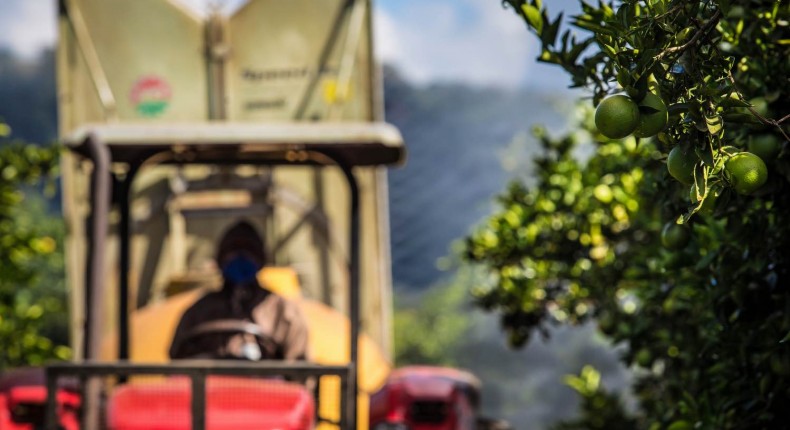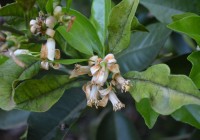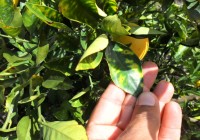22
jul
Spraying on the right direction categories: Environment, sanitary control

How management and new technologies helped reducing by 70% the volume of chemicals applied in Brazilian groves.
As the saying goes “less is more” and it makes total sense when it comes to citrus spraying. It might seem strange, considering that few crops suffer as much with plagues and diseases as the citrus crop. Even so, a series of studies developed in partnership between the Agronomic Institute of Campinas (IAC), affiliated to the Secretary of Agriculture of the state of São Paulo, and Fundecitrus, a research organization funded by a partnership between citrus growers and the industry, showed that in the last 20 years, the volume of solution, which is the mix of agrochemicals and water, used in applications should be reduced from an average of eight to ten thousand liters per hectare to something around two to three thousand liters per hectare. This represents a 70% decrease in product volume applied in the fields. This is one of the main findings of a series of special features on spraying, published in the CitrusBR magazine. In the last two issues, the publication covered the latest in management and technologies used to make it easier to apply agrochemicals in a more effective way, in order to control plagues and disease, environmentally safer and more economic for the producer.
Even though the cost of this kind of operation fluctuate from one production model to another, it’s easy to see that this kind of change not only saves agrochemicals, but also saves spraying time, time/machine, fuel, water, among others. In other words, it’s possible to protect more spending less. “The big issue today is to adjust the volumes applied in the field so that the producer uses the exact dose of the product. No more, no less”, reveals the scientific researcher from the Center for Engineering and Automation at the Agronomic Institute (IAC), Mr. Hamilton Humberto Ramos.
One of the main experts in citrus spraying in Brazil, Mr. Ramos has dedicated 20 years of his work to research better ways to have an efficient phytosanitary control. He explains that in order to apply it in a environmental and economic correct way, it involves paying attention to the equipment, the speed of tractors, attention to the weather, among others. “Paying attention to these, we were able to significantly reduce the volume of products used in the field”, he says.
In the field
From research to groves, there are many cases of citrus growers who have adopted standards of excellence for sanitary control of their groves. One example is the farm Agro Terenas. With eight thousand hectares of groves, distributed in three farms in the countryside of São Paulo, the group invested R$500 thousand, or around US$160 thousand, in a software to map the whole property, so that the data collected by professionals looking at trees for plagues and diseases is updated in real time in the database. “We want to have an integrated database with precise information on occurrence of diseases and operational control over spraying”, explains the agribusiness director of the group, Mr. Adilson Penariol.
The system allows to map which areas inside the same section have more sick plants and need larger doses or spraying, which increases the efficiency of the application. “Besides, the system itself will manage the samples to be inspected, so we can have an even more precise average of each disease”, explains the director.
From there, the data regarding spraying, input consumption and the average speed of the machines will be crossed in order to guide the next steps. “We have already made many changes in the last few years and now, with the implementation of the system, we will reach a high precision at work”, explains Mr. Marcio Soares, R&D supervisor. The last stage, with no deadline to be implanted yet, will probably be to process all theses data and put them on the “smart sprayer”, which, through it sensors, will be able to adjust the application according to the data collected in the groves, guiding the exact speed and volume of solution for each part of the section. The idea is that the technology will also be able to identify with precision when and where the nozzle should be closed, like in places with difficult angles and no plants, for example. “This way we have more control of the diseases, saving product and no environmental risk”, says Mr. Penariol.
- |

